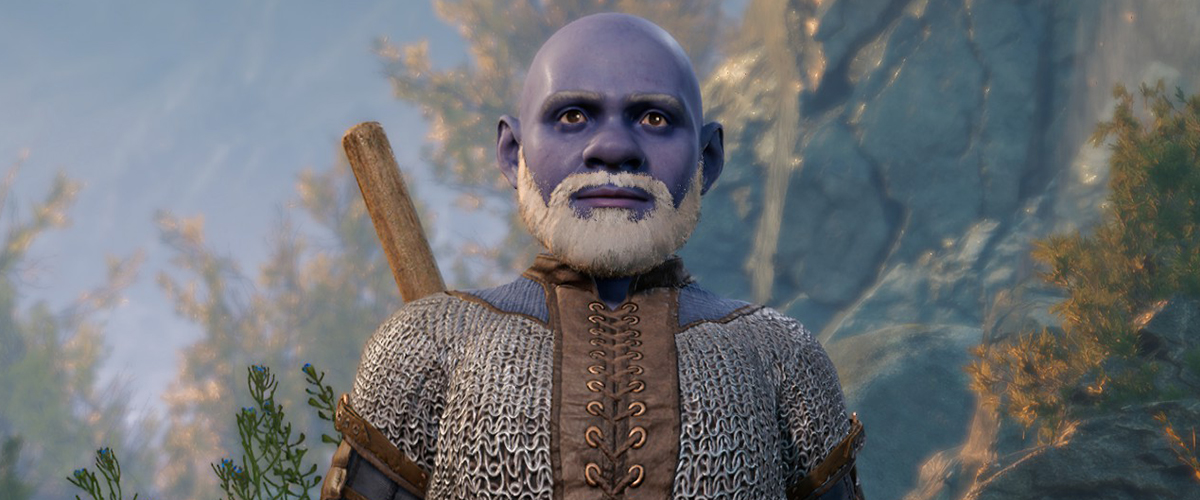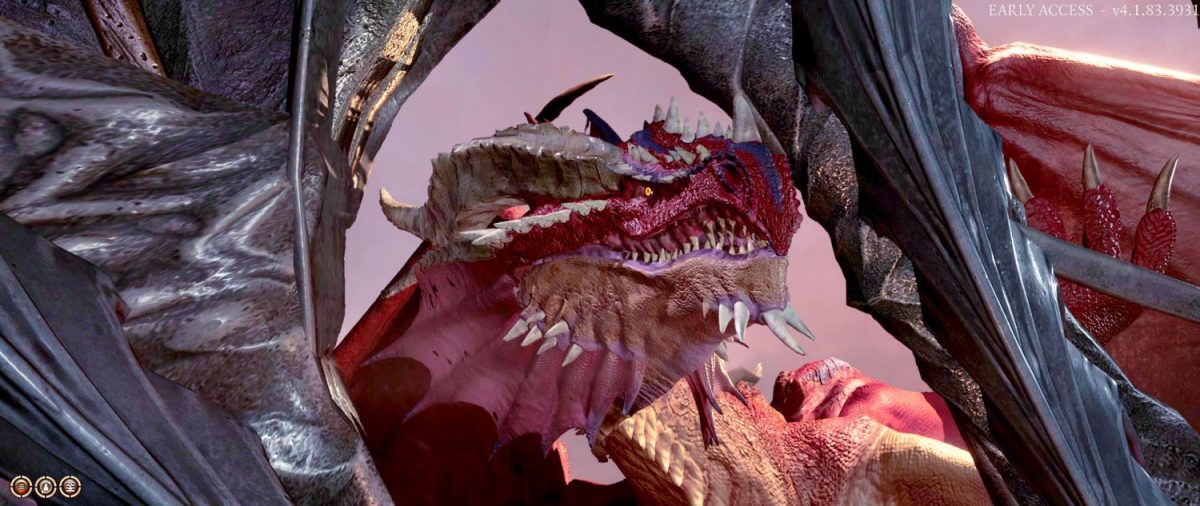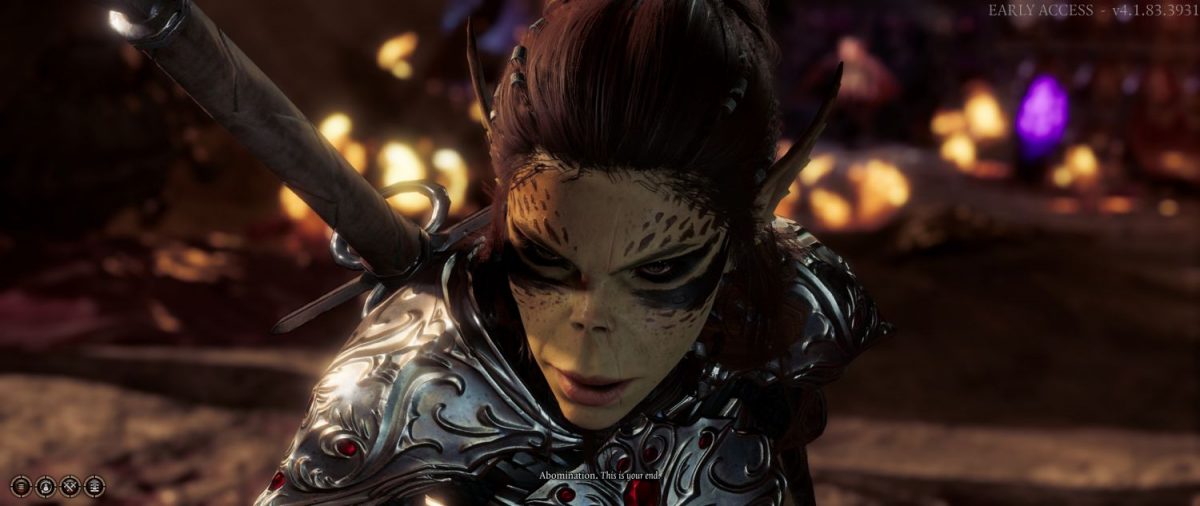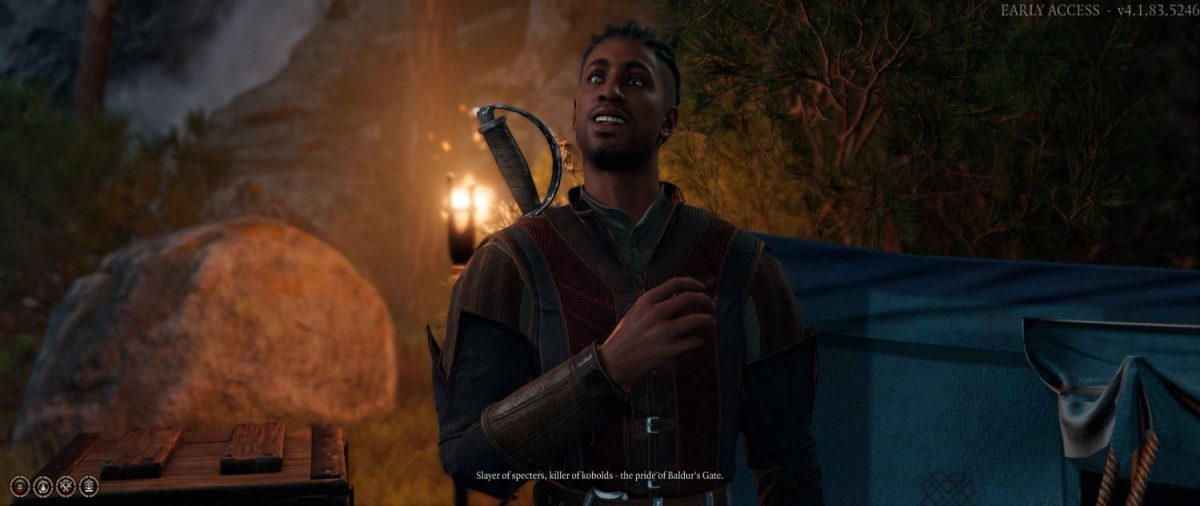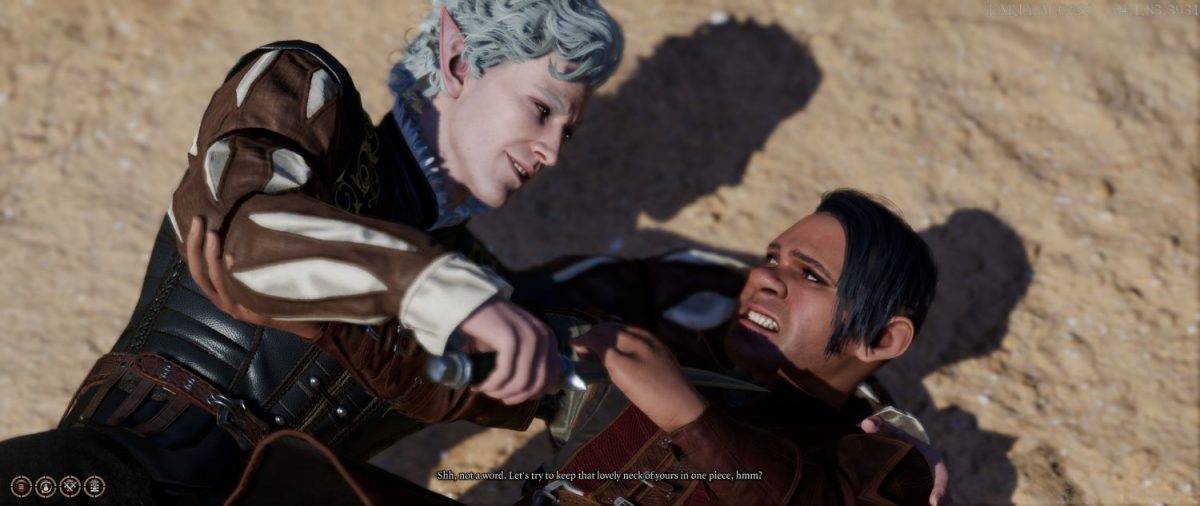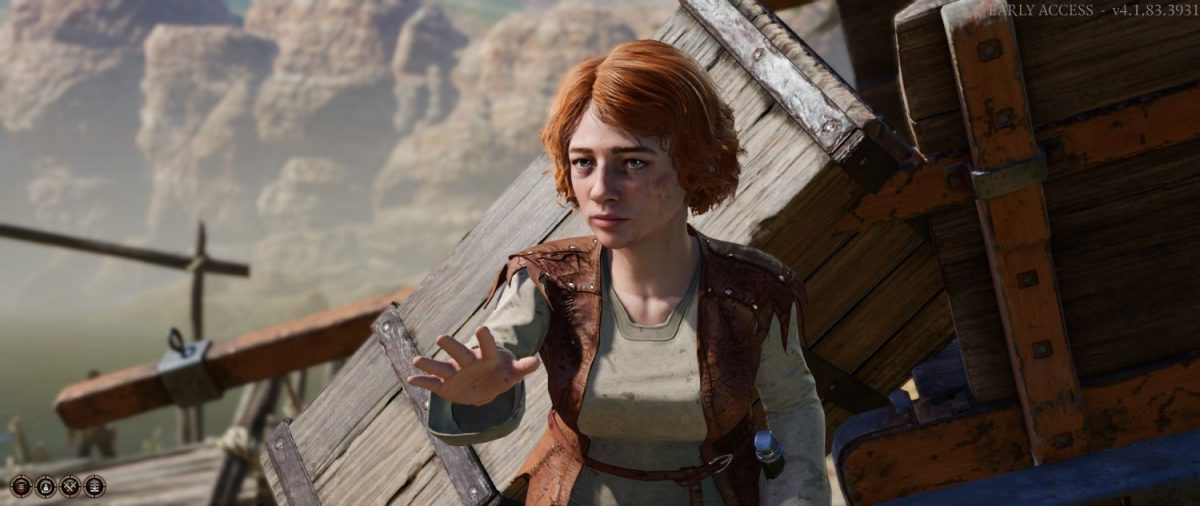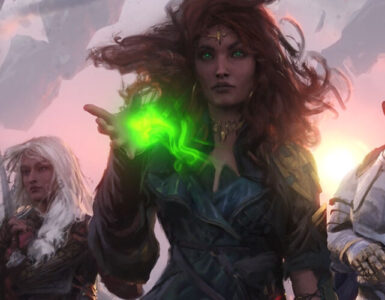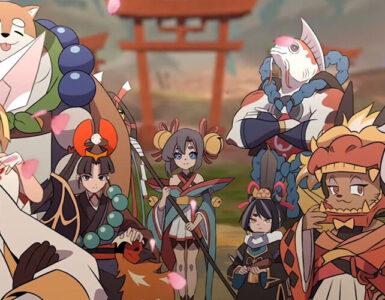19 years. That’s how much time has passed since the last game in the legendary Baldur’s Gate series and since then, gamers have seen three new console generations, each building upon the last with innovations in game design, technology and storytelling that have elevated the medium to greater technical and cinematic heights.
Which means that despite its pedigree, Baldur’s Gate 3 (the early access version of it, at least) by Larian Studios has a lot to live up to, especially since it has confidently taken over the reins of the franchise from BioWare. Many have invested dozens upon dozens of hours on the original two games, and have no doubt been looking forward to the time when Baldur’s Gate would eventually open its literal gates up again..
After over 20 hours into the early access version of Baldur’s Gate 3, it’s easy to appreciate just how far video games have come in general. In essence, this game in its current state is breathtaking, well-written and downright fun at its best. But every five minutes, you’re constantly reminded that this game is still cooking in the oven, as it is rife with bugs, glitches, and other forms of technical hiccups that one could find in an early beta, and certainly leaves room for improvement across all aspects.
But even in its early access, one can’t deny that there’s potential to make this sequel make it big in today’s landscape of fast-paced, high-adrenaline, low-attention-span-centric AAA games with its demand for you to pay attention to details and extremely fluid storytelling. All it needs is more time in the oven, and it’s good to go.
Gathering Your Party
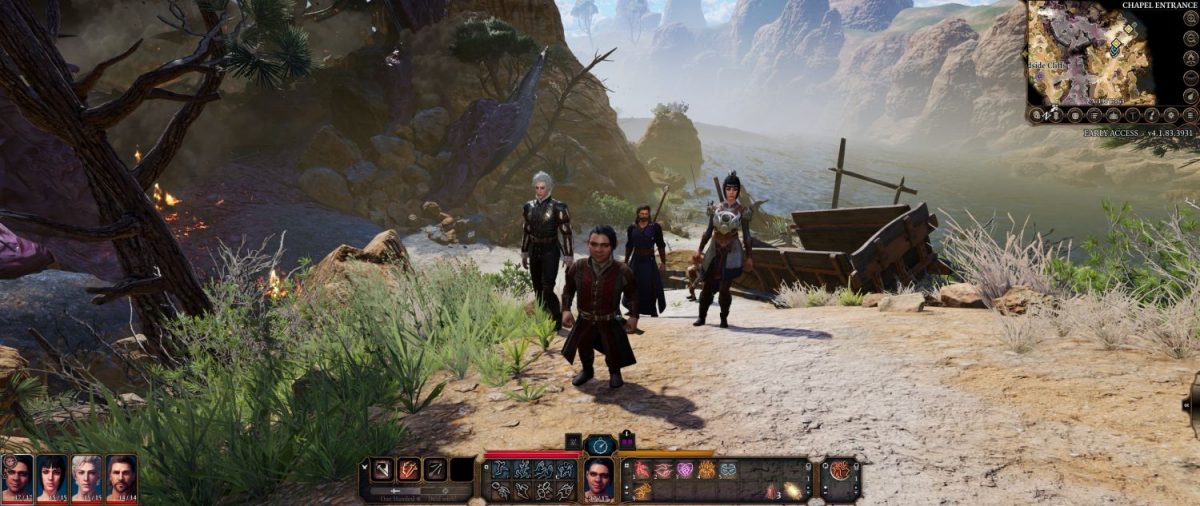
For the uninitiated, players in this game are put into the shoes of an adventurer who had been abducted by the mind flayers, an invasive psionic race that imposes their will on other races by performing ceremorphosis, a process by which they implant a mind flayer tadpole through the eyes of victims, and after which it gestates and morphs the afflicted into one of their own. Along with the help of other infected adventurers, sets out on a quest to the titular city of Baldur’s Gate and beyond to figure out how to remove the tadpoles from their brains and prevent them from transforming into the dreaded mind flayers.
From a narrative standpoint, there is also a much closer link to Dungeons & Dragons, mainly due to the fact that it is an officially-licensed D&D game by Wizards of the Coast. Larian has been known for not just crisp, enjoyable turn-based tactical gameplay in Divinity: Original Sin and its sequel, but also for its elegant and elaborate writing, and such is evident once more in Baldur’s Gate 3. But for every attempt the studio makes to put its own charming Larian spin on things, it pays reverence to the extensive lore and background of the D&D universe threefold.
Every single character — and we mean that literally — in the game has been given their own name and even their own voice lines, even if they’re playing a bit part in the background. Players are encouraged to slow down, take their time and speak to everyone and anyone they meet along the way, because while they may not always have quests to dole out, they have a thing or two to say about their immediate surroundings or things that have happened to them, which alone gives players context to the impact of events that have occurred recently.
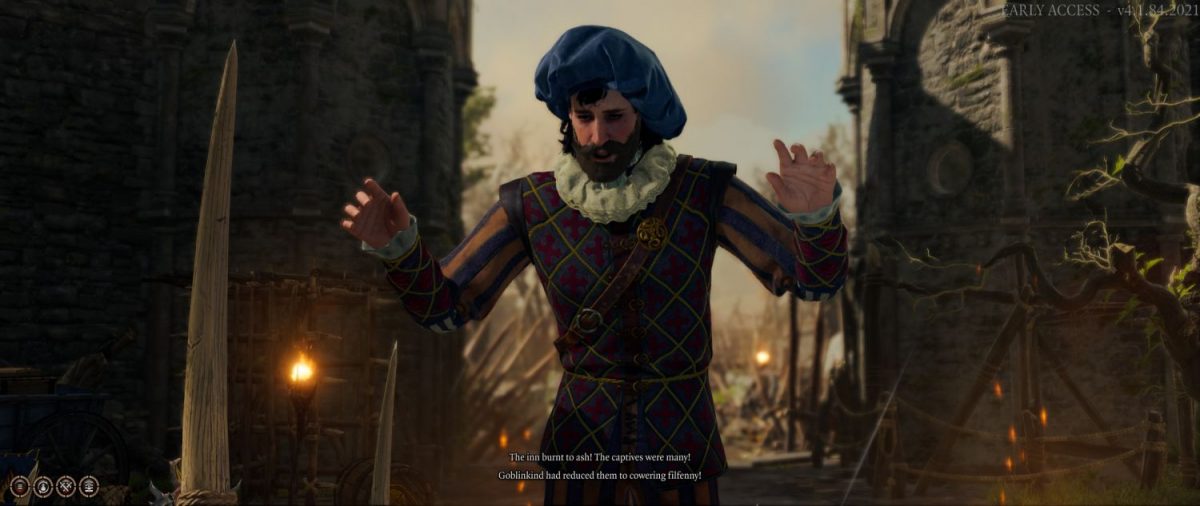
For example, players stumble across a small town early on occupied by tieflings (horned humanoids that have descended from devils), as well as a coven of druids. After a round of speaking to various NPCs there, one learns that the tieflings are refugees from the fallen city of Elturel, which was destroyed after the events of a previous official D&D hardcover adventure (a nice narrative tie-in to the RPG). The tiefling community is then left to fend for itself, trying to coexist peacefully alongside the druids, but the de facto leader of which has been conducting a ritual to chase them out. Players are then encouraged to rescue the actual archdruid, who has been captured by a band of raiding goblins, in order to put a rest to said conflict.
Though players don’t have to play through the official tabletop adventure, Larian has found a way to nicely tie in the events of that story into this one, and in this case all players need to know is their current plight and have all the context they need to embark on their quest. And in typical Baldur’s Gate fashion (and, by extension, Larian’s as well), there is no black and white in this situation, as both the tieflings and druids have their own grievances toward the other party and have legitimate reasons for their personal intentions. It is then up to the player to exercise their own judgement and decide on an outcome that befits their own journey in the game.
It is writing like this that makes playing Baldur’s Gate 3 so compelling, and hearkens back to the complex and engaging writing that has made the original Baldur’s Gate and Baldur’s Gate 2 so iconic. Even the other five companions that the player meets and recruits to their cause are equally colourful and contrasting in world views and personalities, which makes party banter so fun.
There’s the steely, pragmatic and snobbish Lae’zel, the Githyanki Fighter, who values her race above all others; to the darkly charming Astarion, an Elf Rogue that also happens to be a vampire spawn and has an unquenchable thirst for blood at the most inopportune moments; and to the sarcastic Shadowheart, a Half-Elf Cleric that is as mysterious as she is sassy, unafraid to speak her mind without letting others in too much on her secrets; Gale, a Human Wizard with an equal flair for the arcane as well as a bit of good old-fashioned banter; and finally the cocksure Wyll, a Human Warlock who has an ego that is probably bigger than his fighting prowess.
There seem to be at least two more companions players can recruit (we’ll leave you to figure out who those are) during our playthrough, since there are entire quest chains given to these characters, but whose quests seem to end abruptly. And given how these characters all feature in just the first act of the game, we can only imagine there are more waiting to sweep us off our feet (or vice versa) in later acts in the full release.
While the current roster of companions have yet to leave an impression, similar to characters in previous games such as Minc the good-hearted-himbo Ranger with his trusty miniature giant space hamster Boo, or Viconia the evil-but-eventually-turns-somewhat-good Dark Elf Cleric, they are each given their own deeply-engaging backstory that has potential to make them much more loveable characters in the full release. But of course, since we’re only allowed to play through just the first act of the game, we won’t be able to see their personal growth over time, though we can see snippets of that happening.
Going For The Eyes
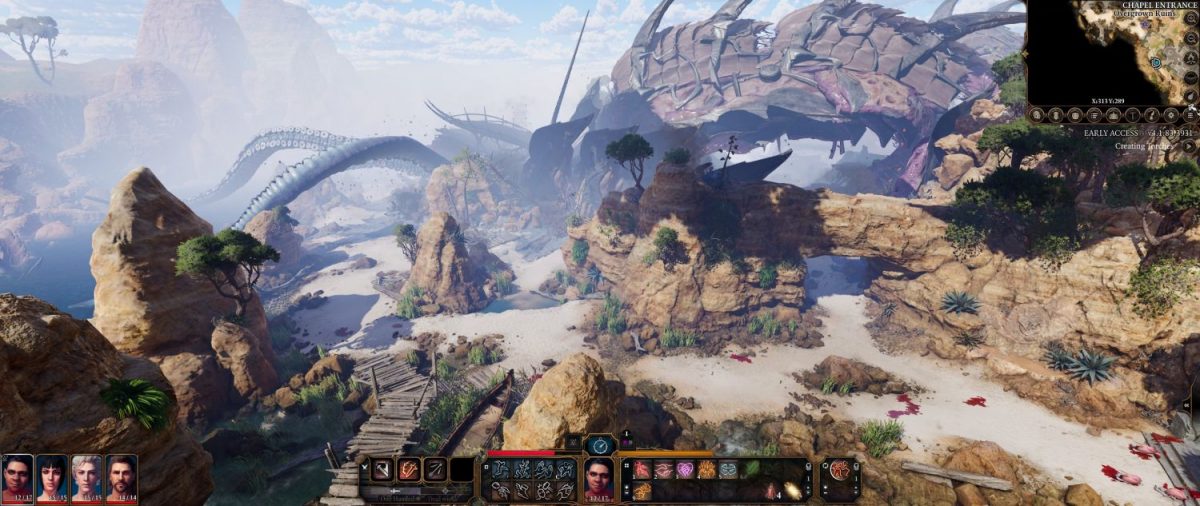
It goes without saying that Baldur’s Gate 3 is a stunning game — probably even Larian’s most visually-scintillating one yet — especially if you’ve the hardware to support its Ultra settings. Each locale has been given such painstaking attention to detail, from densely-vegetated and occasionally muddy forests, to the mist-covered, and even muddier swamps, to the dank and stalactite-filled expanse that is the Underdark. The ability to move the camera past your character and explore the immediate vicinity is always a welcome feature, especially when you’re entreated to vistas this lush and detailed.
That said, there is the occasional pop-in and stutter each time players discover a new area on the map, or cross from one level of a building or hill to another as the game loads up, and this is so even in lower graphics settings. Even though the game’s world is split up into large, sprawling maps, the engine powering it still needs some stabilisation work in order to run smoothly.
Character models are extremely detailed too, with pores or ugly scars riddling their faces, arms and legs. Their cloth outerwear billows in the wind, as do their fine locks of hair. Metal surfaces such as plate armour and weapons gleam nicely against any light source (something we imagine ray tracing in the latest RTX 30 series GPUs will no doubt capitalise on).
In terms of animation, the motion capture on characters’ faces is on par with most other AAA titles that have come out in the past year or so. Every subtle twitch in facial expressions can be seen and isn’t overly done, and is complemented by expressive, if not occasionally janky, hand gestures. This breathes so much life into already-engaging dialogue cutscenes which is punctuated by superb voice acting.
But since we’re in early access, there are bound to be technical hiccups. Unfortunately, as visually-interesting as dialogues are, it is during these instances where you see characters enter some of the most hilarious-looking glitches. At times, a character will stop into a freezing halt while still talking; in others, the shot of a character will be completely obscured by other characters moving around in the foreground; and in my playthrough where my character was a halfling, he suddenly shot up and warped into human size, albeit with an elongated neck and arms, Junji Ito-style. These glitches are no doubt part of the beta experience, and we imagine Larian will sort them out by the full release. Thankfully, they don’t hamper gameplay directly, so you’ll just have to get used to characters sometimes looking slightly (very) off-centre every now and then.
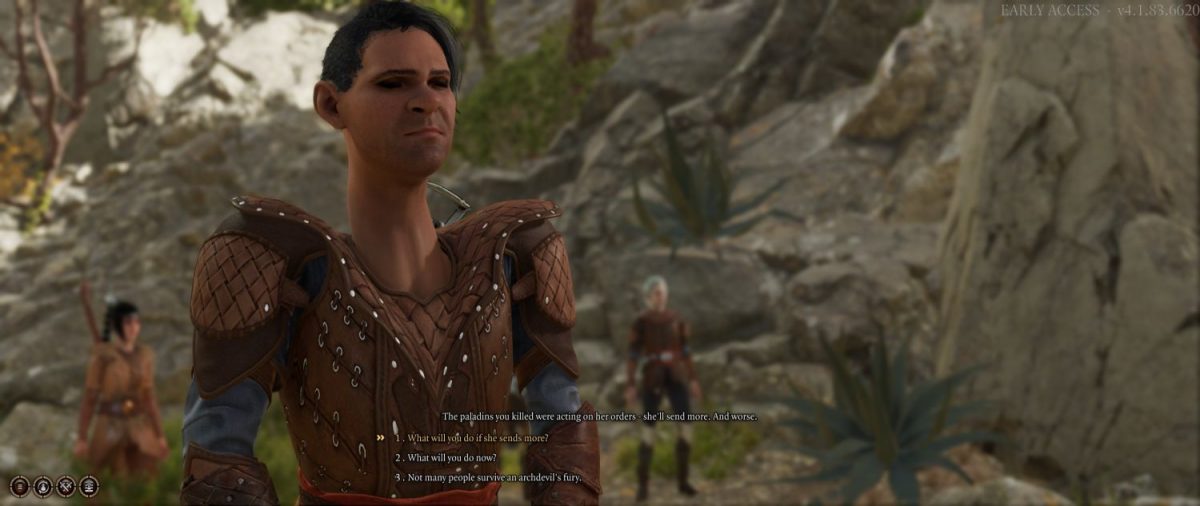
Sound design is pretty solid, too. Spell effects give off big sound when they charge up upon selection, and land on targets with even greater (and thoroughly satisfying) impact (if you roll high enough to hit the enemy). The same goes for physical weapons when they make contact. Even though you’re seeing things mostly from an isometric, almost top-down perspective, you’ll feel as though you’re up close and personal with the action.
And again, in typical Larian fashion, the music is befitting of the high fantasy theme of Baldur’s Gate 3. Where Divinity: Original Sin 2 was much more mellow and serious, Larian pulled no punches in the epic orchestral soundtrack here, and it really gets the adrenaline pumping especially in action-packed segments of the story, or when combat begins. Even the more quiet moments, such as traversing the overworld, are punctuated by lighter string and flute sections that ease one into the lush environments. And when things get hairy especially in dark, dank dungeons, the foreboding mallets chime in, instilling a sense of uncertainty at every step one takes… until someone accidentally triggers an explosive trap that eats up a chunk of everyone’s health.
However, just like how animations falter in cutscenes, sound seems to be lacking as well. Often, we’d encounter certain actions that seem to be including sounds for critical actions, such as hitting someone in the face, or an explosion happening in the background, but just aren’t there. The same goes for the music, which sometimes goes off abruptly during cutscenes. Again, this is another gap that Larian will no doubt be working to plug, but again, it most importantly doesn’t hamper gameplay directly.
Just looking at this game, it’s hard to imagine the studio came from such humble beginnings. It’s very much like seeing the difference between CD Projekt Red’s The Witcher in 2007 and The Witcher 3: The Wild Hunt in 2015, and those who have followed Larian since their Divinity days will be glad to see the developer come into its own and punch well above its weight once more in this title.
Rolling For Initiative
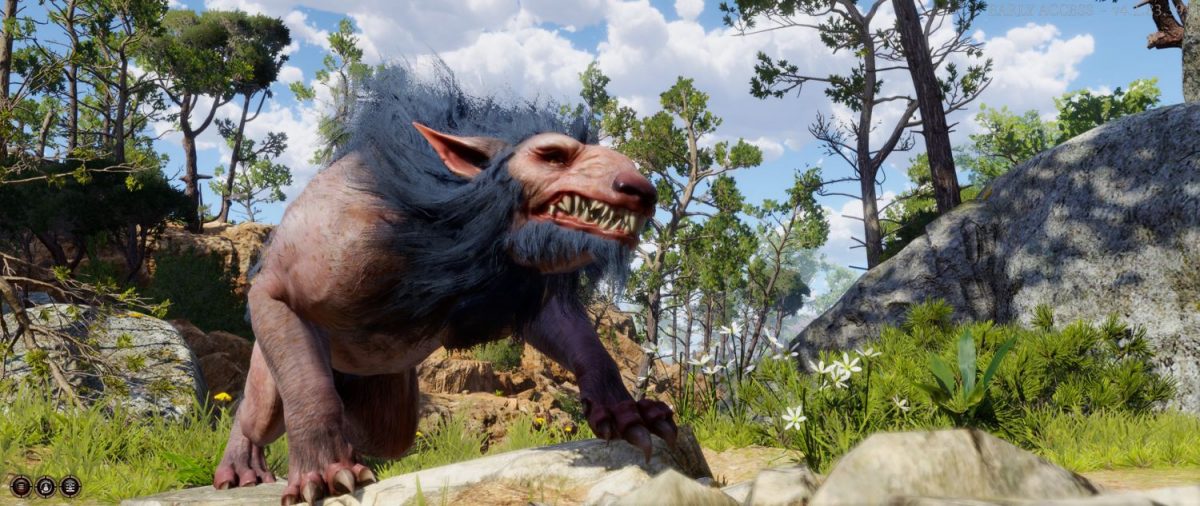
If you’ve played Divinity: Original Sin 1 or 2 before, then you might automatically form the impression that Baldur’s Gate 3 is simply just another Divinity: Original Sin game, but with official D&D 5th edition rules. It’s a fair assumption, especially when the UI looks almost identical to Larian’s previous two hugely-successful CRPGs. But of course, there is so much more to it than that, especially if one is familiar with the D&D 5e ruleset.
Character creation, compared to the tabletop RPG, is a slightly pared-down version in Baldur’s Gate 3 early access. Players pick between seven races (human, dwarf, elf, half-elf, halfling, tiefling, githyanki), six classes (fighter, ranger, wizard, warlock, rogue, cleric), and twelve backgrounds. In actual fact, this is just about half of what the standard Player’s Handbook of the tabletop RPG offers. Already the suggested classes shown under ability scores hints at the rest of the classes will come, so we imagine it’s just a matter of time before these options will be available to players.
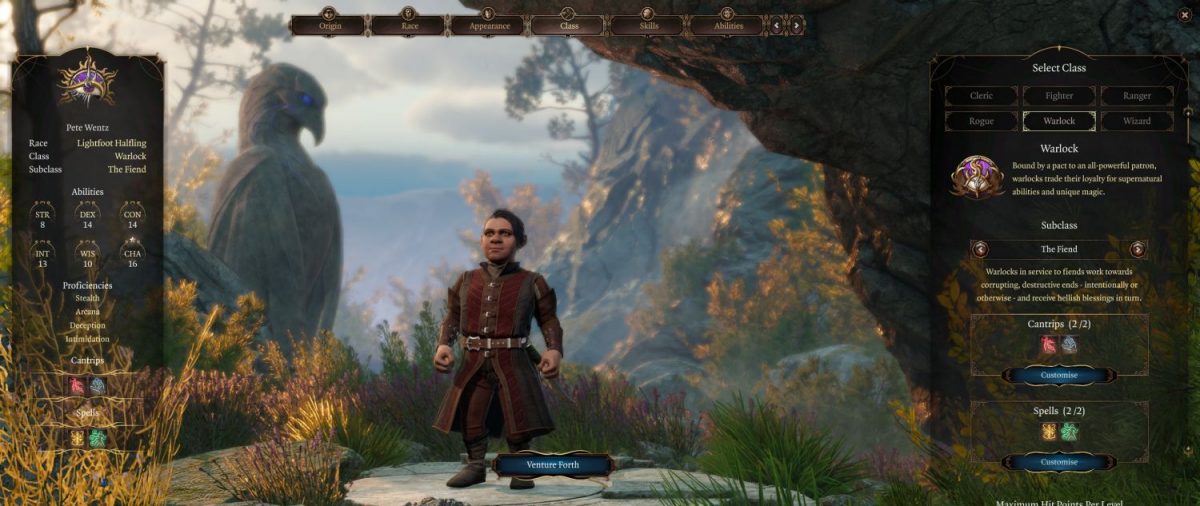
While limited character options in early access is understandable, limited physical trait options for a 2020 game, even in early access, is something even less people could close an eye to. There are a couple of options to do things such as adjust the size of your character’s nose, eyes, ears and so on… but what we imagine most folks were looking forward to was something more fluid in the form of sliders as seen in The Elder Scrolls: Skyrim. Hopefully that’s something Larian could consider in future so players can get even more zany with their character creation choices. But that said, at least they have a wide variety of skin, hair and eye colour options, so it’s always nice to make a blue-skinned Smurf halfling every now and then. You can imagine just why we’ve spent that much time on character creation just on appearances alone. Imagine if all the options from the Player’s Handbook were available, coupled with proper sliders for all facial and body features.
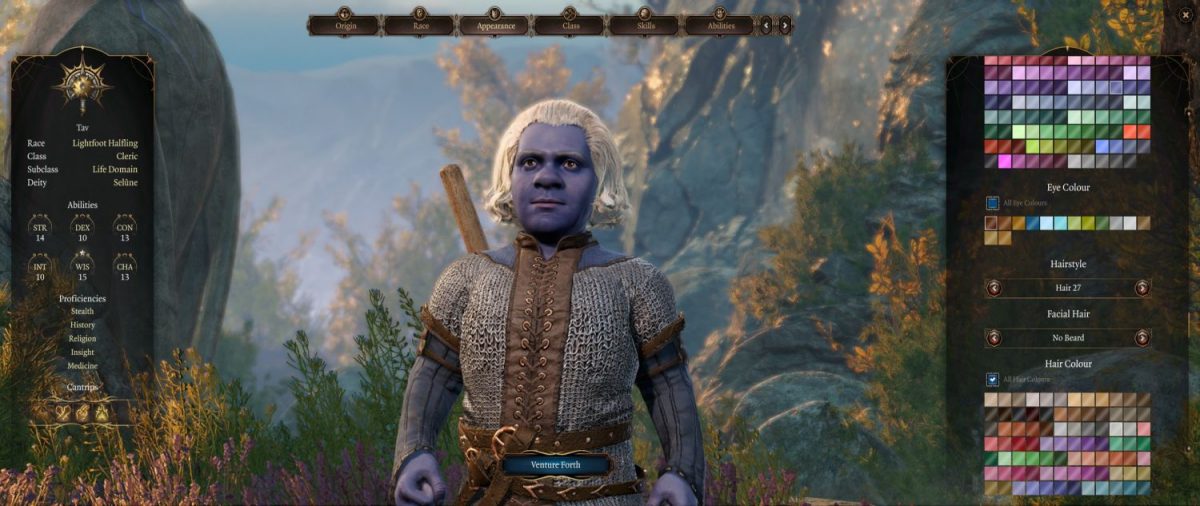
There are three aspects to Baldur’s Gate 3’s gameplay: combat, social interaction, and exploration — the exact same three pillars to D&D 5e’s gameplay. The former works just like typical CRPGs, where the party and enemies take turns beating each other to death, while the latter two comprises a series of skill checks that take place both in cutscenes and in general exploration.
One of the primary reasons why D&D 5e blew up in popularity was due to how accessible its rules were, and Larian capitalised on that accessibility and translated it into video game form really well. And being a combat-focused RPG, it translates quite well in Baldur’s Gate 3.
While it would certainly be of no issue to the devs to simply make the game use D&D 2nd edition’s ruleset as seen in the original two games, let’s just say that ruleset didn’t age well. Long gone are the days where a lower Armor Class results in a tougher character, no thanks to the infamous THAC0 rule (Google that up if you don’t know what it is yet); the math in this game is as simple as it gets for the sake of today’s crowd, which is probably more well-versed with 5e rules; bigger numbers = better chance of success. Of course, with every dice roll comes a series of modifiers that are determined by ability scores on your character’s character sheet.
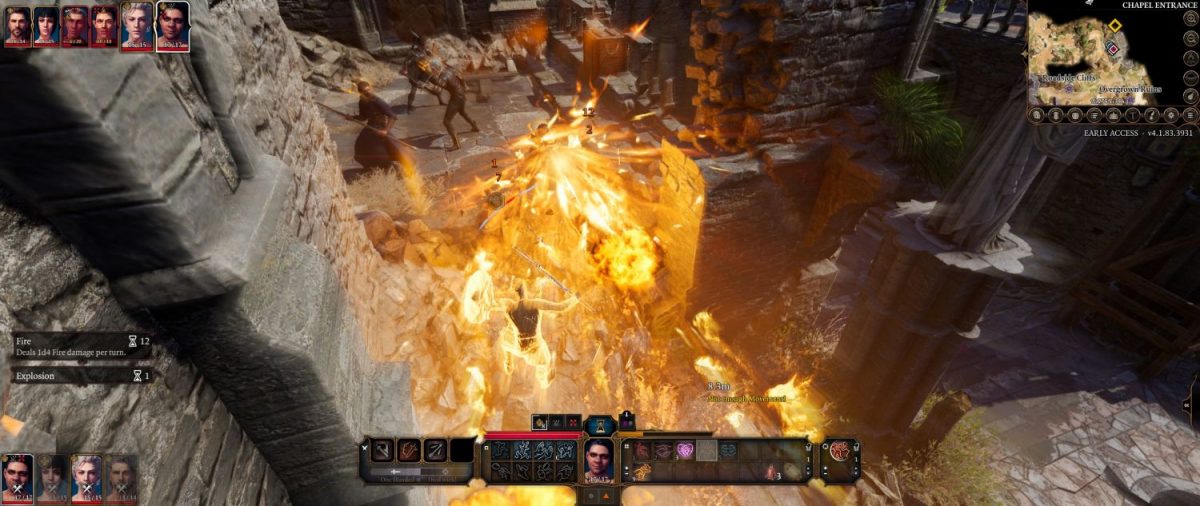
Seeing rolls go off in success and/or failure in the form of actual physical dice in cutscenes, or little dice icons above characters’ heads in the overworld, is satisfying to see. However, it seems Larian has streamlined the math a little too much here. Maybe an option to toggle the nitty gritty of dice rolls would be nice, so we know what exact numbers were rolled to be able to hit the target roll in dialogue cutscenes, instead of having to mentally calculate backwards.
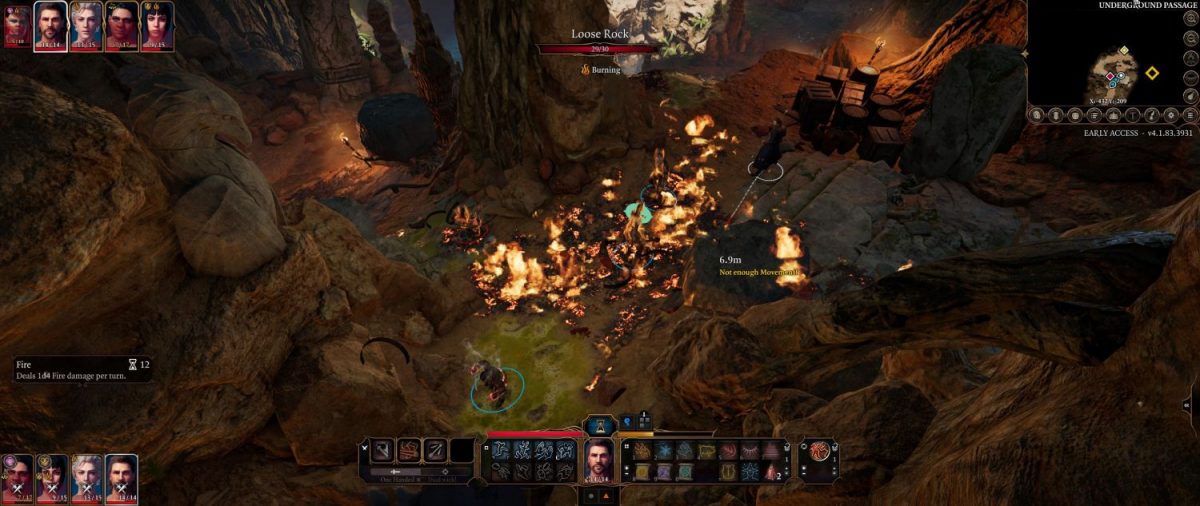
The same goes for combat and skill checks. The roll log as seen in the original Baldur’s Gate games (and actually most other CRPGs) is always a great way to keep track of your rolls, critical hits and critical misses especially for players who enjoy a little number-crunching here and there. And since the popular advantage/disadvantage rule in 5e has been brought to this game, it would have been nice to see just how that translates in-game, as opposed to seeing just a percentage change increase or decrease when advantage/disadvantage is applied. Though everything is literally left to the mysterious powers of RNG (random number generation), just seeing how the results are achieved on the screen is always satisfying to see, even if you’re not a fan of math.
Conversely, though many aspects of combat have been streamlined in Baldur’s Gate 3 to keep things satisfyingly snappy, spell management somehow seems dated. Basically, spellcasting classes will gain the ability to cast these spells at upgraded versions as they level up, which lets them keep pace with the scaling hit point pools of enemies and allies. However, Larian seemed to take a two-steps-forward-one-step-back approach here by including multiple hotbar icons of the same spell, just at different levels.
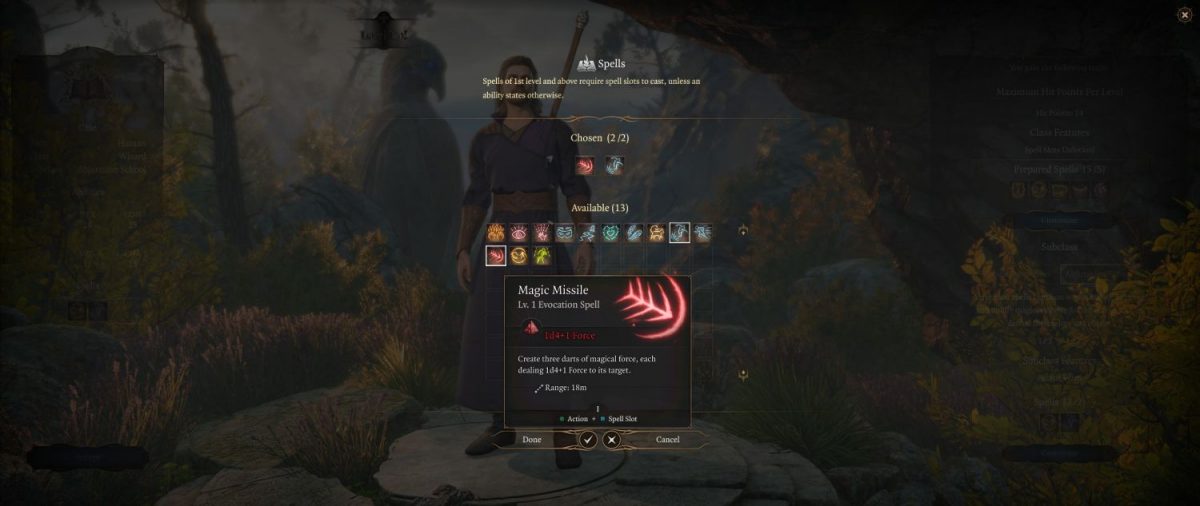
This feature was already quite troublesome to keep track of in the original Baldur’s Gate games, and should have been collapsed in favour of drop-down boxes to let players select which level they would like to cast their spell. This drop-down box feature is seen in the Warlock spell Hex, which lets the player pick which ability score debuff they would like to inflict on the target. It’s something that we imagine is within the technical capabilities of Larian and we hope will be part of the game’s full release.
Speaking of dialogue, it seems that there is potential for conversations to be so much more fluid in Baldur’s Gate 3. Already, we’re given a plethora of dialogue options, each of which as complex as the other, hearkening back to the good old days of head-scratching, dilemma-inducing complicated decision-making in the original games. The outcomes for most of these options are slightly different from the other, which makes for some meaningful conversations and subtly different dialogue paths which encourages different playthroughs.
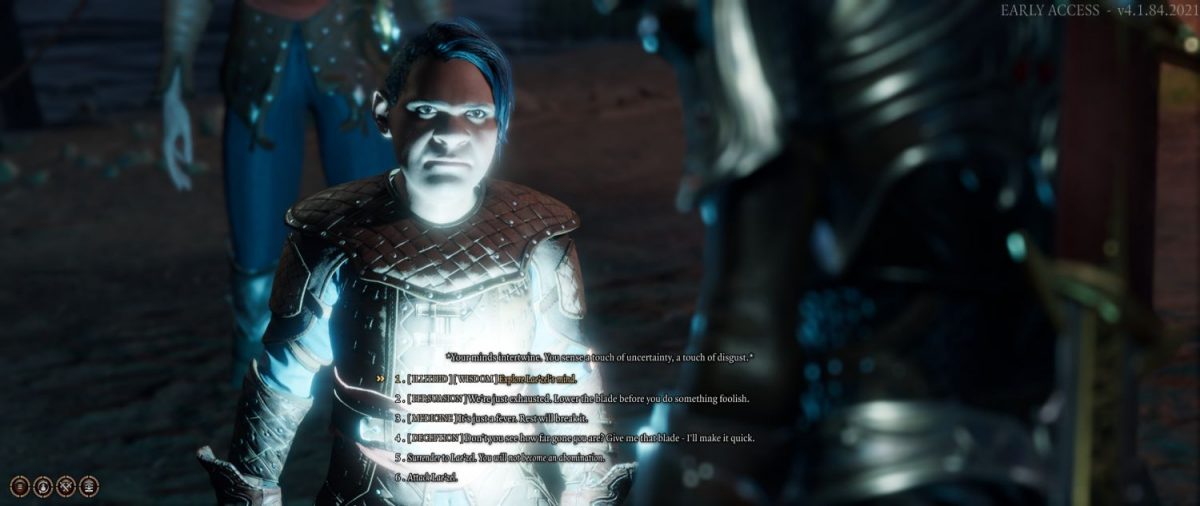
However, there are often instances where it seems as though the other companions seem to want to interject with their own strong opinions, and possibly take over the conversation from there, but only end up giving their two cents and then keeping quiet for the remainder of the dialogue.
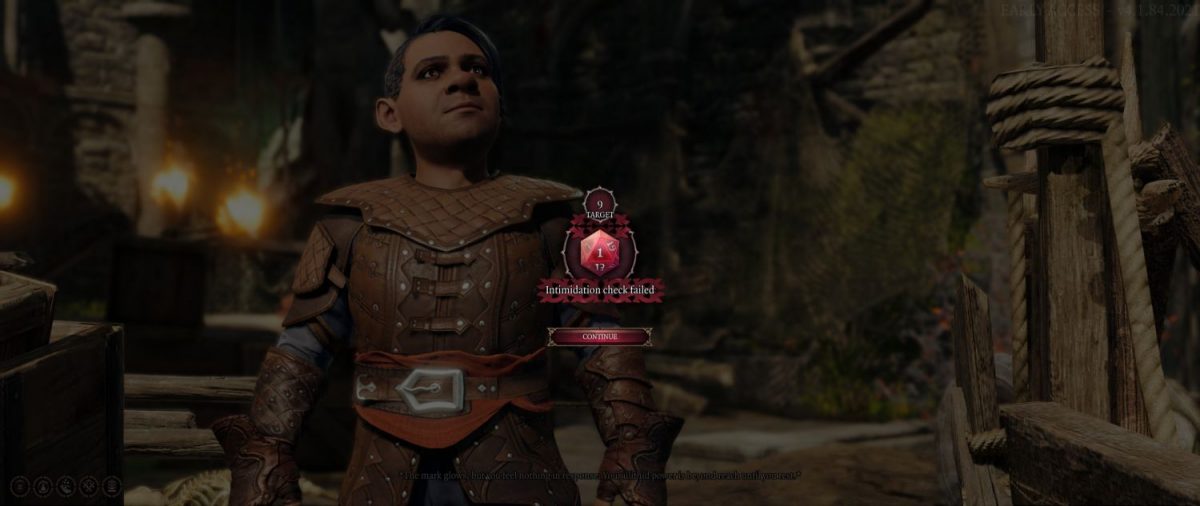
Perhaps, if there was an option to let supporting characters take part in the decision-making process (for example, have the wizard or warlock proficient in magic take over the magic-related scenario instead of the magically-inept fighter), it would make having these companions tag along much more meaningful, instead of having them stand around awkwardly while one person handles all the dialogue.
Venturing Forth
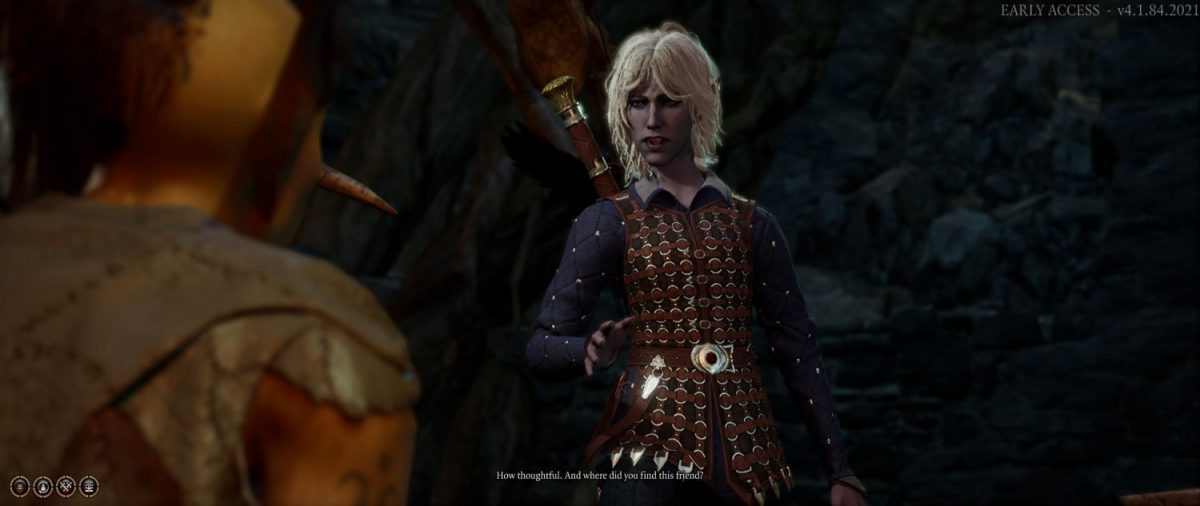
But let these bugs, glitches, and missing features not take away how fun Baldur’s Gate 3 is in its current state. Though you won’t get that far into the story, given there’s only the first act to play through, you’ll be given hours upon hours of gameplay to plough through should you feel incensed to give a different playthrough a try.
Sure, the same bugs (which range from frustrating to downright hilarious) will crop up here and there, but what Larian has done, and is still doing, so far has potential to be something special. Maybe it won’t reach the same grand heights as the original Baldur’s Gate games have achieved, but if given more time in the oven, we imagine will be really fun and engaging in time to come.
Marion has a serious RPG addiction. Sometimes it bleeds into real life; he forgets to sleep because he thinks he has a Witcher’s body clock. Forgive him in advance if he suddenly blurts out terms such as “Mind Flayer” and “Magic Missile”, because never once does he stop thinking about his next Dungeons & Dragons game.

